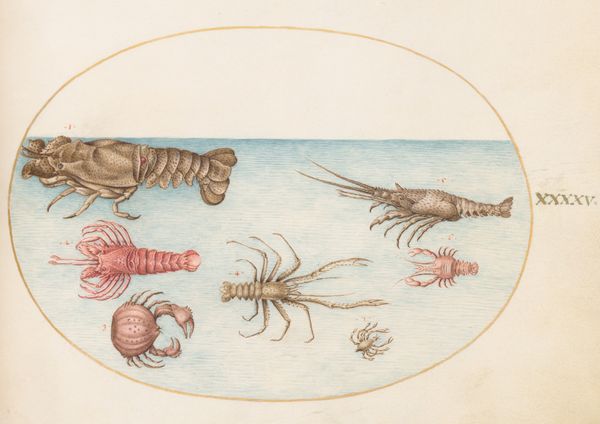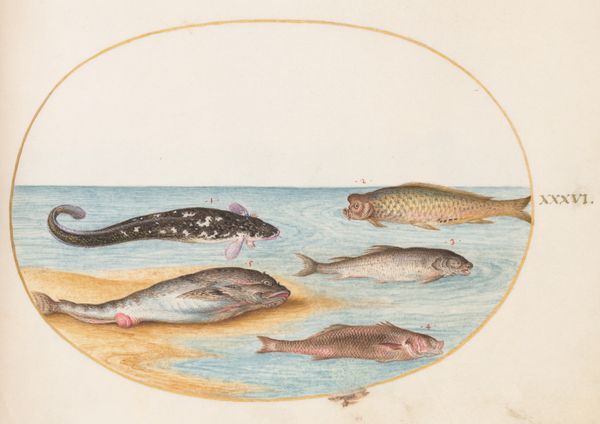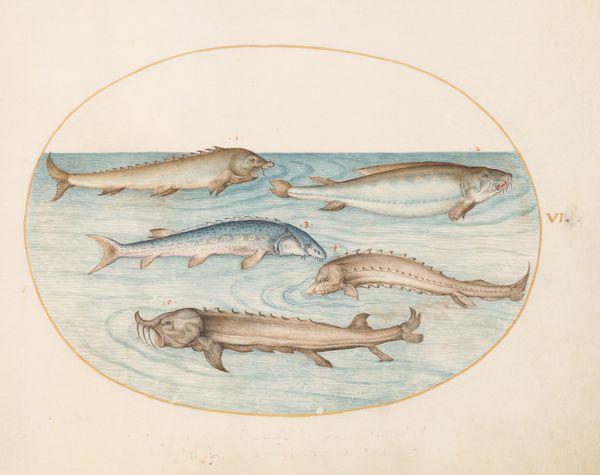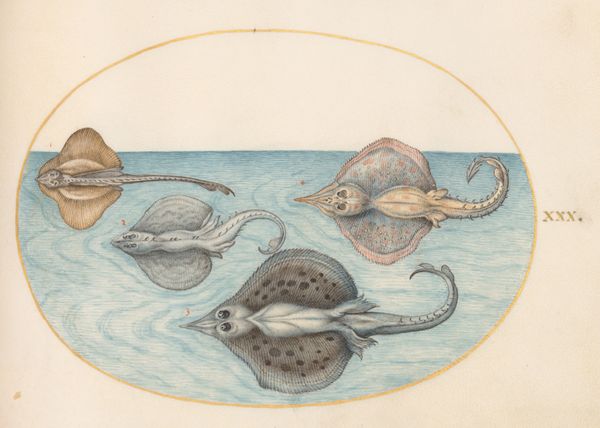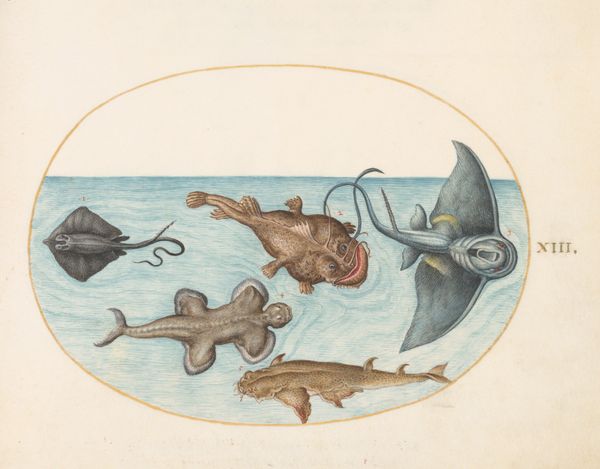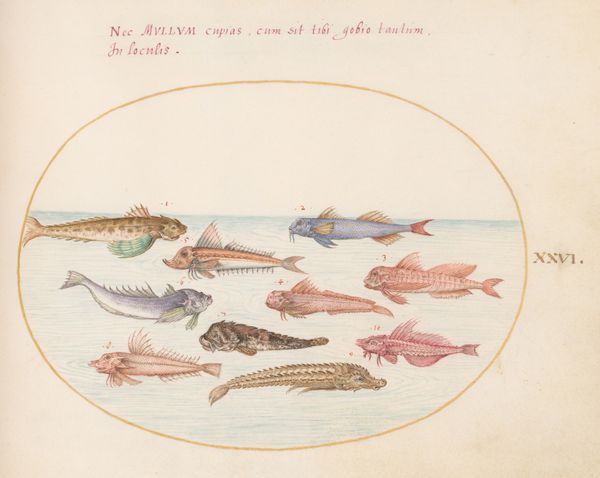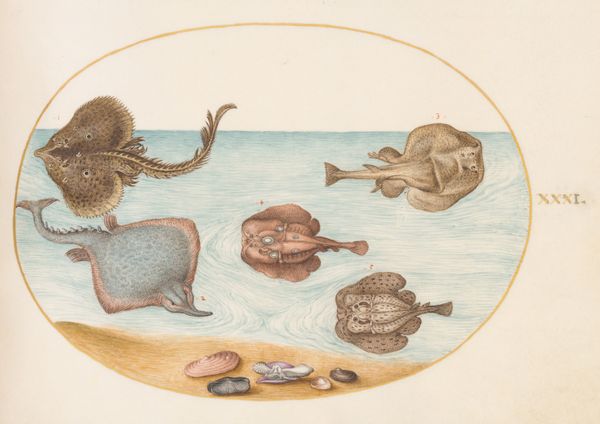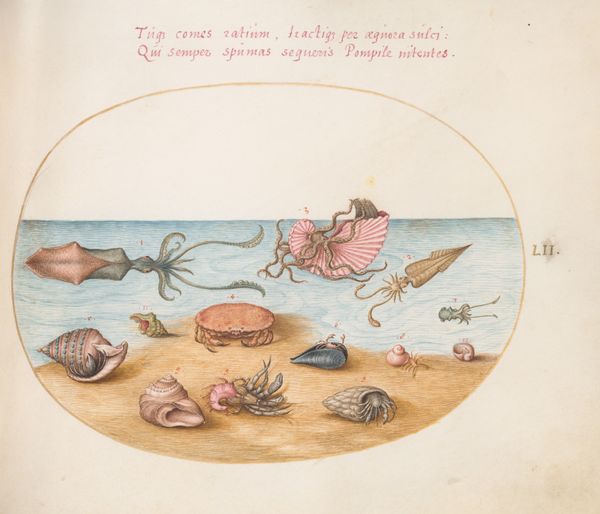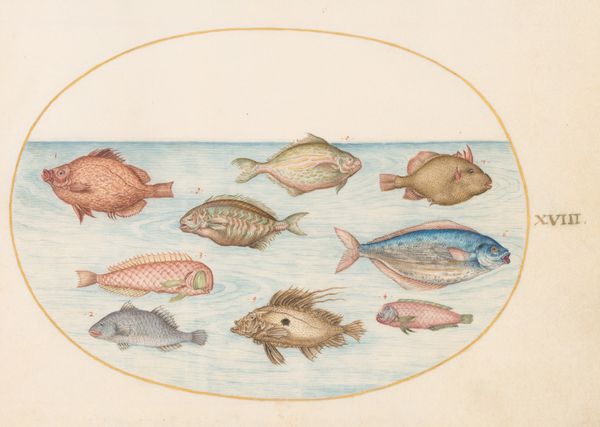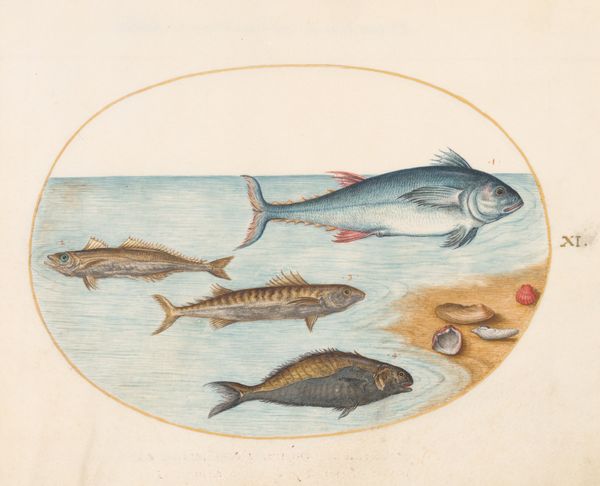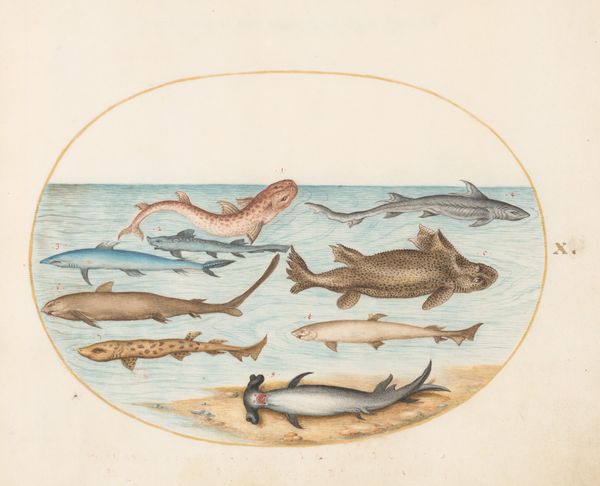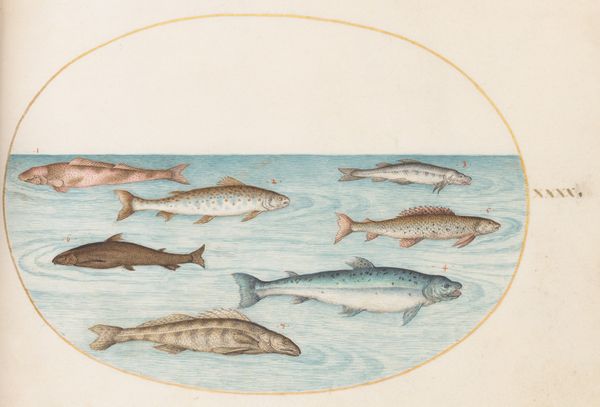
Plate 49: Mantis Shrimp and the Claw of a European Crayfish c. 1575 - 1580
0:00
0:00
drawing, coloured-pencil, watercolor
#
drawing
#
coloured-pencil
#
mannerism
#
watercolor
#
coloured pencil
#
watercolour illustration
#
miniature
Dimensions: page size (approximate): 14.3 x 18.4 cm (5 5/8 x 7 1/4 in.)
Copyright: National Gallery of Art: CC0 1.0
This is Plate 49: Mantis Shrimp and the Claw of a European Crayfish, made by Joris Hoefnagel. It’s made using watercolor and gouache on vellum, a surface prepared from animal skin. Hoefnagel was a master of manuscript illumination, a painstaking practice that demanded the highest level of skill. He used this expertise to produce natural history illustrations, like this one, which are full of incredible detail. Look at the way he renders light playing across the crustaceans’ carapaces, or the delicate gradations of color. These were not just generic depictions of nature. They were intended to record real specimens with scientific accuracy. It’s important to remember that artworks like this were commissioned by wealthy patrons. They reflect a culture of collecting and classifying the natural world. This activity was tied to wider social issues, including the expansion of European power and the exploitation of resources. Appreciating this connection encourages us to rethink conventional boundaries between art, science, and politics.
Comments
No comments
Be the first to comment and join the conversation on the ultimate creative platform.
